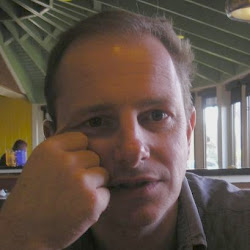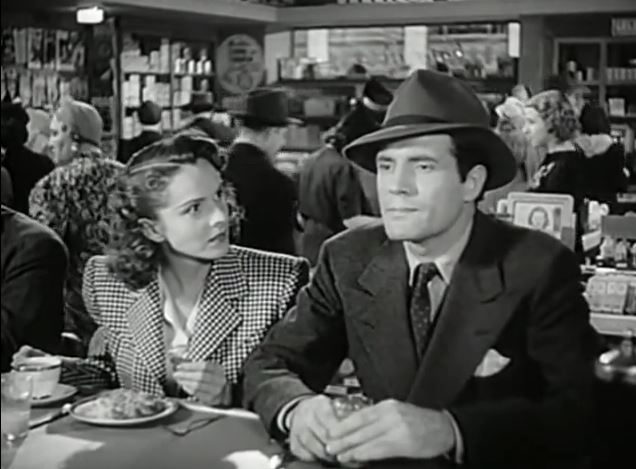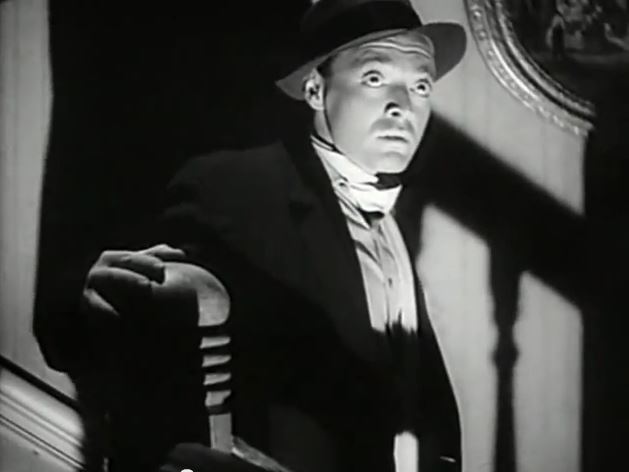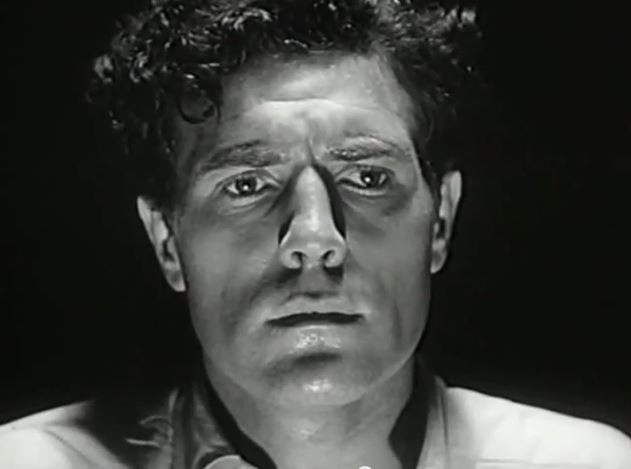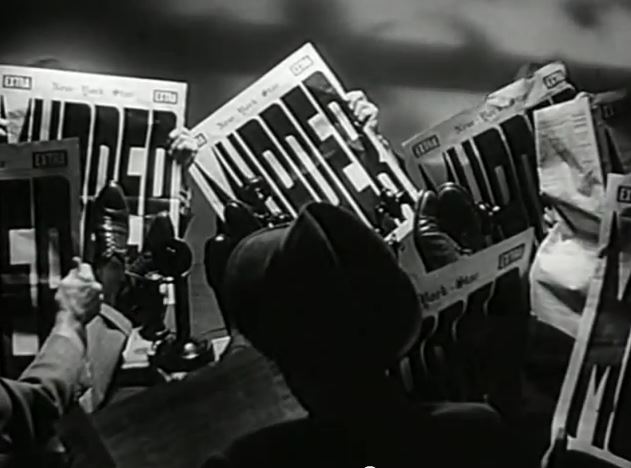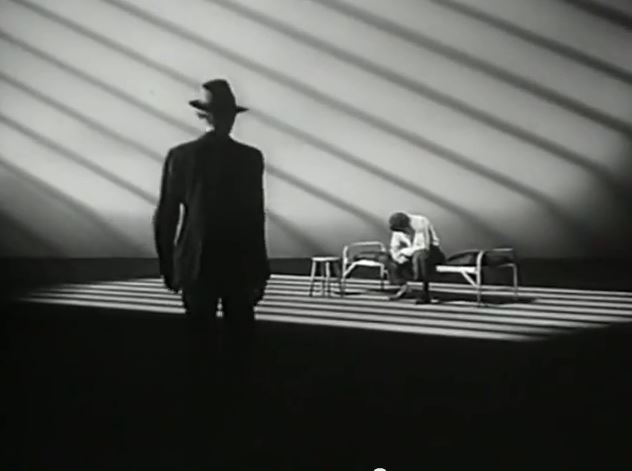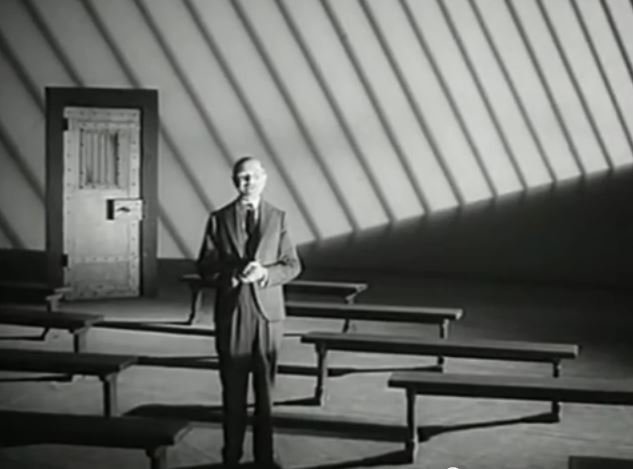Eddie Robson, who is one of the world’s most thorough-going experts on film noir, is determined that Stranger on the Third Floor is the world’s first noir. Not that one should spend a lot of time on this debate, but still it’s discussed. Despite being heavy on the expressionist shadows and the hapless hero, Stranger on the Third Floor lacks a few key noir elements, notably the femme fatale or bad girl — of which there is none. But it more than makes up for that in shadows and the psychological blurring of dream and reality.
This article has been moved to here: https://www.classicfilmnoir.com/2019/04/stranger-on-third-floor-1940.html
The dream sequence is an absolutely surreal and damning look at the US judicial system, and the reality is stark. This is a film that in its own word wants a couple of hamburgers . . . and wants them raw.
Life is great until . . .
. . . you meet the stranger!
District Attorney: So now, you believe both murders were committed by the same man?
Michael Ward: Yes, I do.
District Attorney: Well, maybe you're right. As you pointed out, there are certain similarities between the two crimes, but you missed perhaps the most important: both murders were discovered by the same man - you!
Michael Ward: What are you driving at?
District Attorney: Tell me, has there ever been any insanity in your family?
The real star of Stranger on the Third Floor is the dream sequence, which contrasts the whole odd drama and its peculiar structure. Look out for in particular the angular images of the prison bars with the gruesome shadow of the electric chair. I've broken down the story of this film noir as follows:
- Trial and conviction of innocent man.
- This is replayed in the mind of the newspaper writer who helped convict him, culminating in:
- An incredible dream sequence.
- Quickly wound up with the heroine solving the crime.
One of the easiest ways to spot a noir, is to look for the expressionist shadows. Generally, expressionist set dressing will emphasise crazy lines between light and dark, it's easy to spot. Why it came to be called expressionist, is another story. That's to do with the art movement called expressionism but also critical and even commercial interests emphasising ideas in its name later in the twentieth century.
There was an expressionist style in the cinema, examples of which are Robert Wiene's The Cabinet of Dr. Caligari (1920), The Golem: How He Came into the World (1920), Fritz Lang's Metropolis (1927) and F. W. Murnau's Nosferatu, a Symphony of Horror (1922) and The Last Laugh (1924).
The term expressionist can refer to stylistic devices thought to resemble those of German Expressionism, but we're reading about it here because the word repeatedly comes up in discussion of film noir. Even more generally, the term expressionism describes cinematic styles which try and employ artifice, of any sort, so you here have the technicolor melodramas of Douglas Sirk which so influenced Fassbinder, or the sound and visual flavours of David Lynch.
"What a gloomy dump." STRANGER ON THE THIRD FLOOR (1940)
